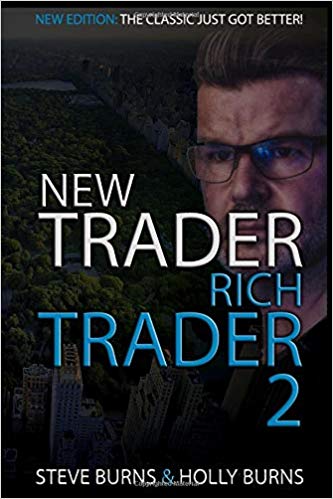“There are just four kinds of bets. There are good bets, bad bets, bets that you win, and bets that you lose. Winning a bad bet can be the most dangerous outcome of all, because a success of that kind can encourage you to take more bad bets in the future, when the odds will be running against you. You can also lose a good bet, no matter how sound the underlying proposition, but if you keep placing good bets, over time, the law of averages will be working for you.” – Larry Hite
“While the speculator doesn’t have the product knowledge or speed, he does have the advantage of not having to play. The speculator can choose to only bet when the odds are in his favor. That is an important positional advantage.” – Larry Hite
In my book, “New Trader, Rich Trader”, I explained the key trading principles that separated the rich traders from the new traders. In my book, “New Trader, Rich Trader 2: Good Trades, Bad Trades” I delve into the different principles between what makes a good trade and what makes a bad trade. Some will be surprised that it is not just whether you win or lose on any one trade, but how you trade the next 100 trades that determines if you are successful, or even survive the trading game.
Good Trades are made by managing the mind, ego, and emotions.
1. A good trade is taken with complete confidence, and follows your trading method. A bad trade is taken on an opinion.
2. A good trade is taken with a disciplined entry and position size. A bad trade is taken to win back losses the market owes you.
3. A good trade is taken when your entry parameters line up. A bad trade is taken out of fear of missing a move.
4. A good trade is taken to be profitable in the context of your trading plan. A bad trade is taken out of greed.
5. A good trade is taken according to your trading plan. A bad trade is taken to inflate the ego.
6. A good trade is taken without regret or internal conflict. A bad trade is taken when a trader is double-minded.
Good trades are just one trade inside a robust methodology that gives the traders an advantage in the long term.
7. A good trade is based on your trading plan. A bad trade is based on emotions and beliefs.
8. A good trade is based on your own personal edge. A bad trade is based on your opinion.
9. A good trade is made using your own time frame. A bad trade changes time frame due to a loss.
10. A good trade is made in reaction to current price reality. A bad trade is made based on personal judgment.
11. A good trade is made after identifying and trading with the trend. A bad trade fights the trend.
12. A good trade is made using the trading vehicles you are an expert in. A bad trade is when you trade unfamiliar markets.
Good trades are always managing risk to keep the trader in the game.
13. A good trade risks only 1% of total trading capital. A bad trade does not have a set amount of risk.
14. A good trade risks $1 to make $3. A bad trade risks losing more than it plans on making in profits.
15. A good trade follows a trading plan even during draw downs in account equity. A bad trade is a big trade made to quickly get even after a string of losses.
16. A good trade has a limited downside but an unlimited upside. A bad trade has unlimited risk and a limited profit.
17. A good trade has an optimum position size for that trade setup. A bad trade is based on feelings, financial need, or confidence in a trade.
To learn more about these principles check out my book “New Trader Rich Trader 2: Good Trades Bad Trades.”

